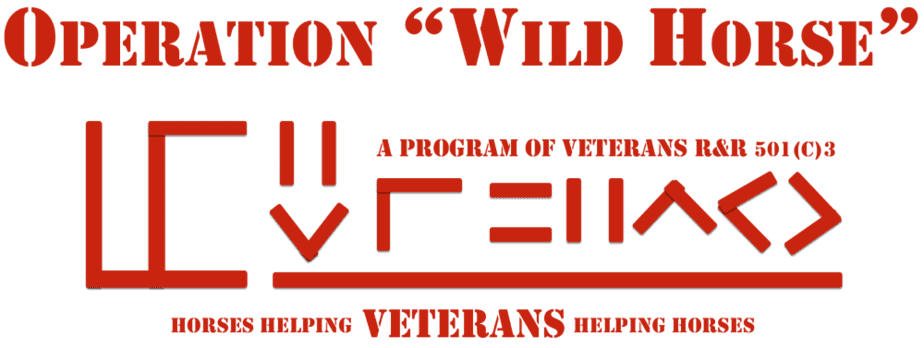
—As told by Program Director, Patti Gruber
Operation Wild Horse (OWH) started with another organization called Veterans R&R (Release & Relief), which Jimmy Welch founded in 2013. I (Patti Gruber) watched the organization start growing, and in 2015, I decided that I’d had some success within the equine arenas and I wanted to do something to give back.
I approached Jimmy and asked him if I could work with him to do an equine program. He initially said no, and I don’t really take “no” for an answer. So I said, “Well, why don’t you come out and meet the horses and see what you think.” The first time I brought him out, I put him and another Marine on domestic horses, and the domestic horses were great. The one Jimmy was on was, at the time, ridden by a seven-year-old girl and the other Marine was on a very quiet painted horse.
The Marine had a fabulous experience on the painted horse. He absolutely loved the horses; went walking, trotting, and galloping around the arena, and thought it was the best thing ever. Jimmy, on the other hand, was so terrified of this little girl’s horse that he kept zipping the horse with his legs. I ended up hand walking him around the arena. It was safe to say Jimmy wasn’t convinced that horses and veterans had anything to do with each other or that the horses could offer anything beneficial.
As I said, I don’t take “no” for an answer, so I invited him to come back and meet my mustangs, Sally and Padré. I had him go and sit in the middle of the indoor arena on a chair. I said, “Just hang out there, and let’s see what happens.” Padré went into the arena and he went from corner to corner just looking at Jimmy and observing him.
Once Padré decided that Jimmy was okay and he wasn’t going to eat him or harm him in any way, he went over next to him, put his head down, closed his eyes, and started taking a nap. “That’s pretty amazing,” Jimmy said. “He just stood there watching me and then came over.” I said, “Well, pick up your chair and move it somewhere else in the arena.” So he did, he picked it up and he moved it off to the side of the arena where we had just put a new clock on the wall. Padré was a little offended, ‘We had just become a herd, and now you’re leaving.’
Padré went over by him, touched the clock on the wall, and then touched Jimmy. He kept doing this back and forth as I’m watching them both. Jimmy asked, “What is he doing?” We had just put the clock on the wall that morning, and it was a black clock on a white wall, so it was very obvious. I explained, “He wants you to take the clock down off the wall and show it to him.” Jimmy was like, “Whatever.”
I said, “No, I’m serious. Take the clock down and show it to him.” So he takes the clock down, holds it in front of Padré and he nosed it all over. The second he got done nuzzling it and decided it wasn’t a threat, he stepped to the side of Jimmy, put his head down, and went back to his nap. From that point forward, Jimmy realized there really was something about the mustangs and maybe the veterans would benefit from these behavioral experiences.
It took us about two years of planning to come up with what we were going to do for Operation Wild Horse. In February 2017, Marine Corps League 1395 in Lake Barrack, Illinois awarded us a grant to lease two mustangs from a friend of mine for six months. I owned two mustangs at the time, so we had four to work with. Our task was to have the veterans program up and running so that they could ride in the Memorial Day parade in May.
We had a little more than three months to get veterans, who weren’t riders and who likely suffered from some level of trauma or disability, to be able to ride in a parade. If you’ve never ridden in a parade before, I can tell you anything that can possibly go wrong normally does—you have to be prepared for everything. After the parade was a success, one of the Marine riders told me, “Riding a horse was as close to the feeling of being back in the military where you’re in control but could be out of control at any moment.” He said he enjoyed that feeling.
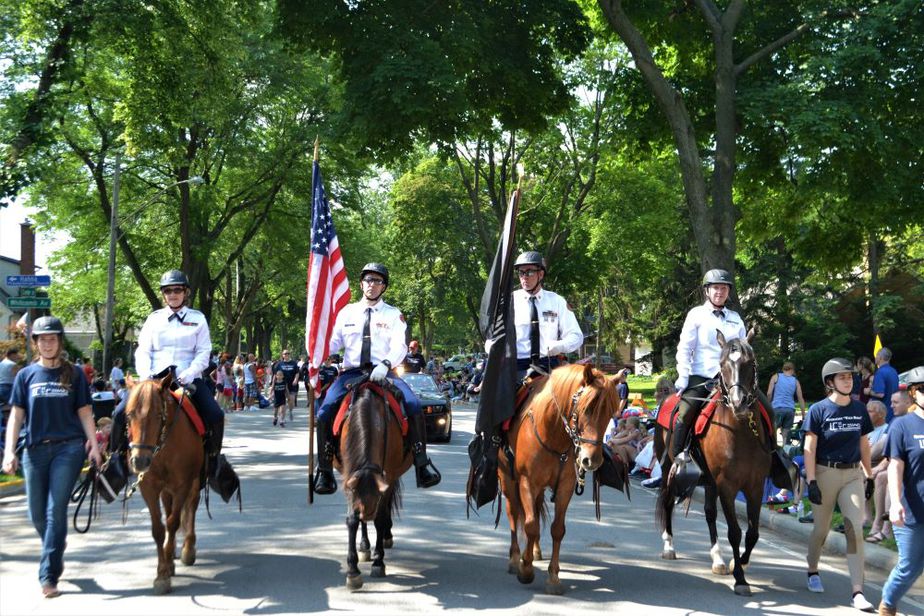
So we got through the parade, everything was beautiful, and we started inviting veterans out on Saturday mornings from 8:00am to 10:00am for what we call “Veteran’s Camp.” We started by listening to the veterans about the different things they would like to do and what they would like to get out of the program. We really built the program by listening to them and what their needs were. We still do that to this day. We let them tell us what they’re looking for, what they would like to do with their riding, what activities they would like to do, and what they do and don’t want to do out in the community.
It’s a very structured, unstructured program in that we teach them how to ride, how to take care of the horses, and how to develop good groundwork and horsemanship skills, but aside from that, you never know on any given day who will come in and what they’ll want to do. Someone may have a 2:00pm lesson on a Wednesday, but they’ll arrive at 10:00am because they have things going on in their lives that are difficult and they just need to come out and be in the barn for a while to get away.
The barn is a place they can go without getting 100 opinions on what’s going on in their life. And it’s not a bar—it’s just a safe space. They may just go out and spend time with the horses in the pasture. They may pull one out and groom it. They may just stand on the fence line and watch their world happen. And then their lesson time comes and they may or may not decide to bring a horse in and get it tacked up to ride. Even after their lesson is over, they may stick around for a couple more hours to enjoy some camaraderie with other veterans who’ve shown up.
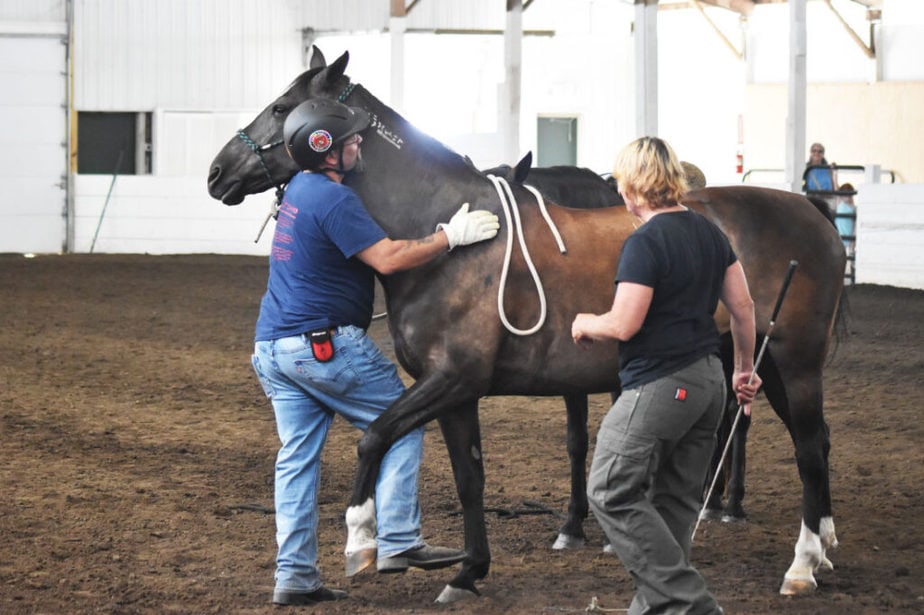
We make sure the veterans know how to behave safely around the horses, that way we can let most of them have free run of the place. When they first come in, I do all of the evaluations with them and I figure out what they do and don’t know. They have to participate in Veteran’s Camp a bit so that they learn the ins and outs of what is safe and not safe to do around the horses.
Then, when we start going out in the pasture, the first thing we have to do is teach them how to catch a wild horse. That may sound easy if you’ve ever dealt with a domestic horse, but if you don’t approach a mustang the way that it wants to be approached, it’s going to turn around and it’s going to leave. The veterans really have to learn how to master their body language. We do a lot of that at first.
Once we’re through that process, we know that they’ve connected with a horse and we know that they have the skills to be safe. They’ve spent some one-on-one time with me in riding lessons and in the barn. Then, when I think they’re ready, I pair them up with a veteran mentor who’s been with the program a little bit longer and really knows the ins and outs of what they can and cannot do. That’s just an extra measure of safety.
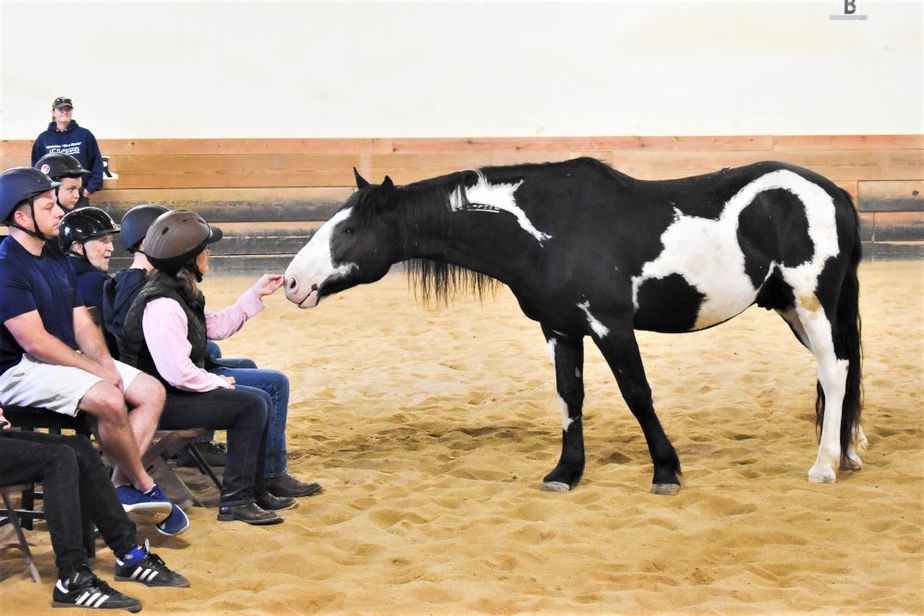
Another big piece is that we try to figure out which mustang each veteran connects with, and we try to pair them up specifically with that mustang. I have had a variety of horses in my life, and in 2006 I got my first mustang. She was basically an untouched mare and I can tell you, in the first year that I had her, I learned more about horses than I had in my whole entire life as a horse person. I had to learn to think like them and to put pressure on them and take pressure off of them at their comfort levels.
Whereas, with a domestic horse, you can put whatever you want on them and most of the time they’re just going to deal with it and keep going. It doesn’t work that way with a mustang. They truly mirror your behavior. So I became a much better horseperson by having that first horse. At the end of that year, the man that I got her from, Dr. Ric Redden from the International Equine Podiatry Center in Lexington, Kentucky, asked if I would take a second mustang—Padré.
When I first got Padré, my friends all bought me stuff with skulls and crossbones on it. They’re like, “What are you doing? You got a mustang and he’s a stallion!” and “Oh my god you’re going to die!” Padré turned out to be the biggest puppy dog on the planet. I could turn him out with other horses. I traveled the country with him; just me and him most of the time. I could take him anywhere. I would take him to go do something scary over any of my domestic horses any day of the week.

I built my riding career with Padré. He is so amazing, and he helped me show the rest of the world how amazing mustangs are. Padré is the first wild horse to qualify and compete at Dressage at Devon. He won his stallion class and was named Reserve Grand Champion Stallion Overall. He’s the only mustang that’s ever been recognized by the United States Dressage Federation, where he holds a national ranking with them for dressage sport horse breeding stallion. He’s only been beaten by the number two and number three warmbloods in the country. He beat the Swedish warmblood with the highest score of all time for a stallion. All for in-hand dressage breeding stallion competitions.
After winning at Dressage at Devon, a blogger on the east coast found out about him and started to petition Breyer to make Padré into a model horse—now he is one. Normally, Breyer horses are only out for one year, but his model sold so well that they produced it for two years. In 2011, Dressage today featured Padré in their January, August, and November issues.
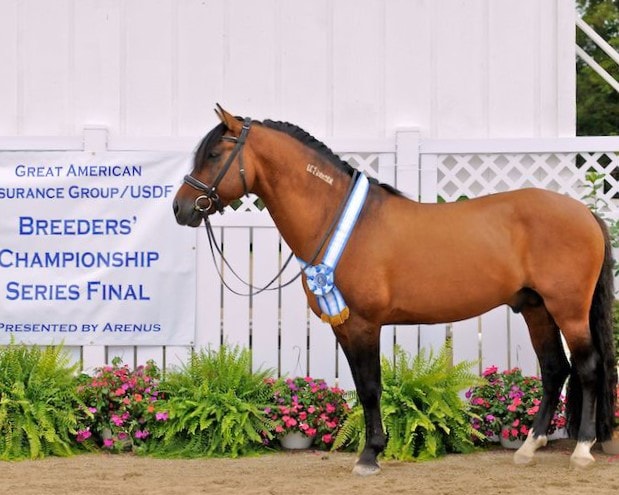
He also has a children’s book written about him and he’s part of an adult book series called, For the Love of the Horse. So when I say I had success in the equine industry, it was because of Padré and my relationship with him. I knew that I wanted to show the world how amazing these horses are, and I thought, ‘Let me take this and try and give back by helping veterans.’
Both of my grandfathers are best friends; one of them served in the navy and the other one was a Marine who was in a POW camp for a while. I saw the difference between my two grandfathers growing up. My grandfather who was in the navy was a pretty well-adjusted and happy guy. My grandfather who was a POW couldn’t deal with his demons. He self-medicated and his wife self-medicated to deal with him. I just wanted to do something to make a difference because I was so fortunate that Dr. Redden had gifted Padré to me; that allowed me to create this life that I never imagined I could have, let alone with a mustang.
We have ten mustangs in our veterans’ program now:
- “Phoenix” who’s a bay mare named for rising from the ashes since she was rescued from a kill pen in Nevada.
- “Socks” is a black mare also from Nevada, but who came through the Mustang Makeover program from a trainer named Tracy Porter.
- “Peanut” is a sorrel mare who is also a kill pen rescue.
- “Shrimp” is a chestnut mare who came through the Mustang Makeover program, also from Tracy Porter.
- “Ranger” is a gelding named after his former owner’s profession as an Army Ranger.
- “Gold Star” is named for the gold star symbol military families receive when they lose a loved one in war; he came from the father of a Marine Corps sniper.
- “Rooster” is a chestnut gelding named after the nickname given to M60 machine gun handlers in Vietnam because their machine gun muzzle flashes were reminiscent of a rooster’s tail; he came from an auction where we outbid a kill buyer to get him.
- “Pearl Harbor,” whose name needs no explanation, is a black and white pinto gelding who came through the Mustang Makeover program, trained by Brittani Johnson.
- “Flicker” is a bay mare named for the beautiful Linkin Park song about suicide called “One More Light,” also started by Brittani Johnson, but she never went through the Mustang Makeover program because of an injury we didn’t want to rush to heal.
- “Fango” is a bay gelding who was just given to us by Dr. Redden (from whom we were gifted Padré).
- “Padré” is a dun gelding who is now 20 years old and retired.
The horses are amazing and they’re therapeutic without ever batting an eyelash, or learning anything in books, or school, or anything else—it all just comes naturally to them. I am so fortunate to be able to share my love of these mustangs with people who absolutely 1000% deserve everything for what they gave. I wouldn’t be able to be a horse trainer if it wasn’t for the sacrifices these veterans made.
Operation Wild Horse is a 501c3 nonprofit organization. If you would like to donate to Operation Wild Horse, please mail your check to:
Operation Wild Horse, 605 South Valley Hill Road, Bull Valley, Illinois, 60098
or go to https://veteransrandr.org/operation-wild-horse/ to donate through their website.
Visit them out on Facebook @OperationWildHorse-VeteransR&R.
As an equestrian media outlet focused entirely on American horse sport, EQuine AMerica showcases the USA’s equestrian talent (both two-legged and four) in the disciplines of para dressage, dressage, hunters, jumpers, and eventing. We support and promote our nation’s fantastic equine events, products, services, artists, authors, science/tech, philanthropy, and nonprofits through our online magazine and social media platforms. Our mission is to offer you interesting/inspiring short and long-form content in a format that’s beautiful, readable, and relatable.



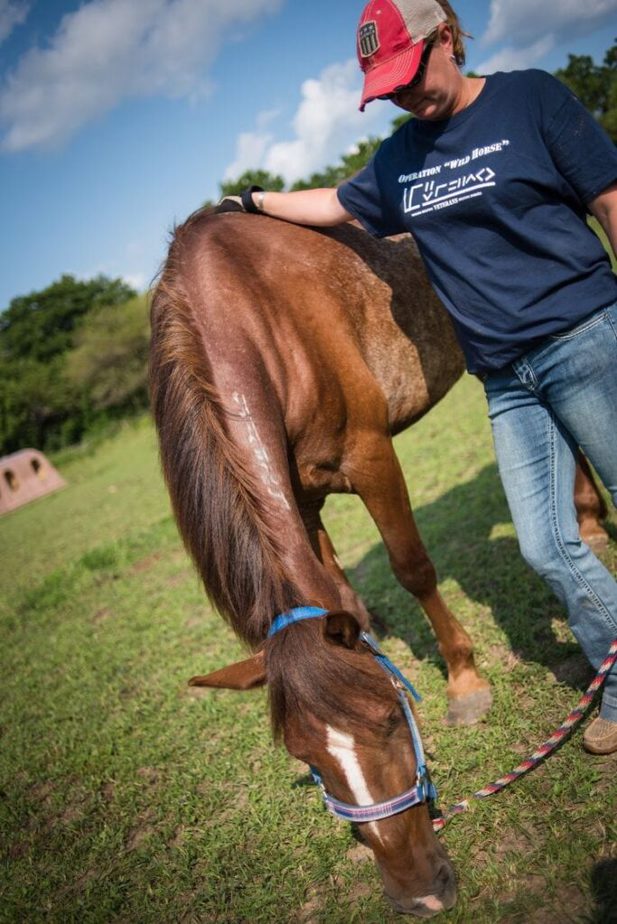
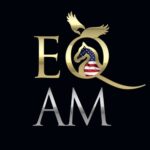
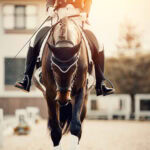
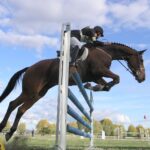
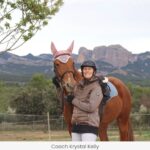

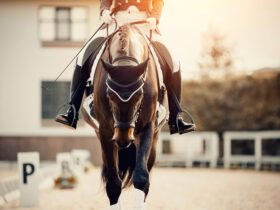
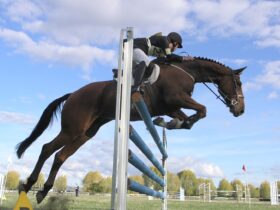
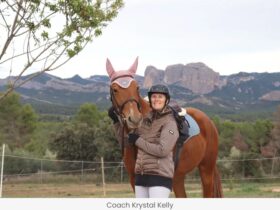
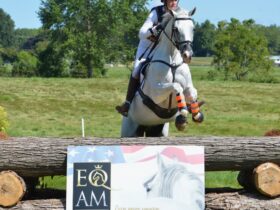
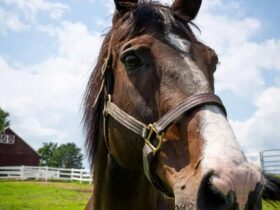
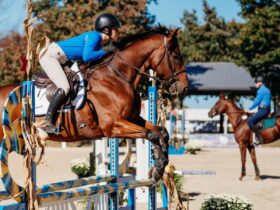
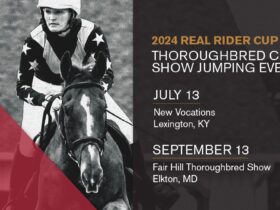
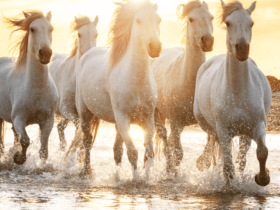
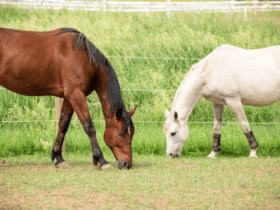
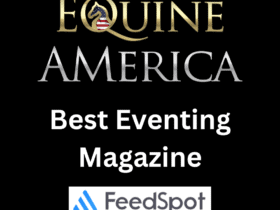
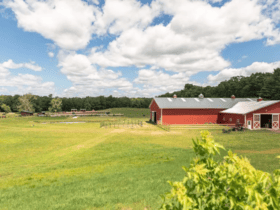


SOCIAL